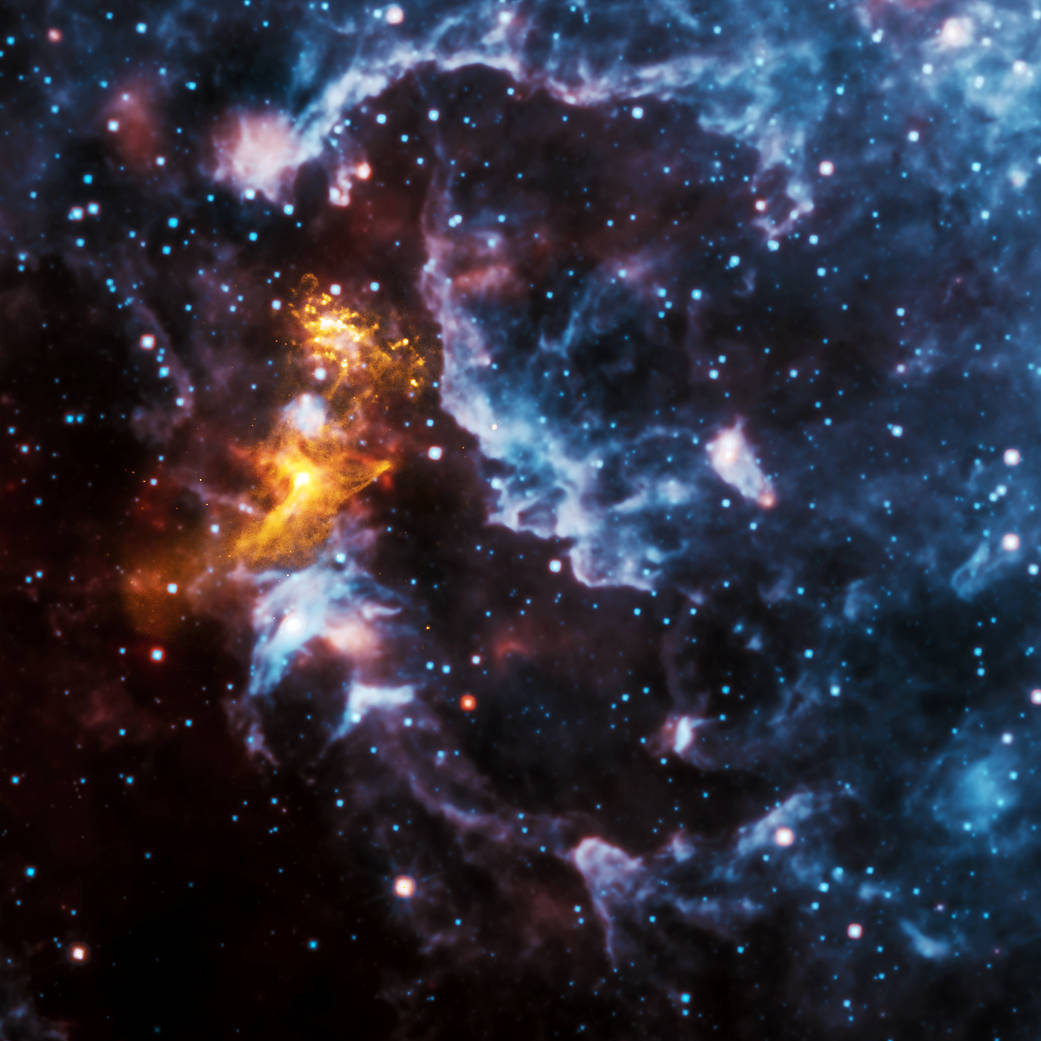What is pareidolia? It is the psychological phenomenon where we see recognizable shapes in clouds, rock formations, or otherwise unrelated objects or data.
When an image from NASA’s Chandra X-ray Observatory of PSR B1509-58 – a spinning neutron star surrounded by a cloud of energetic particles about 17,000 light-years from Earth – was released in 2009, it quickly gained attention because many saw a hand-like structure in the X-ray emission.
In this image of the system, X-rays from Chandra in gold are seen along with infrared data from NASA’s Wide-field Infrared Survey Explorer (WISE) telescope in red, green and blue. Pareidolia may strike again as some people report seeing a shape of a face in WISE’s infrared data. What do you see?
NASA’s Nuclear Spectroscopic Telescope Array, or NuSTAR, also took a picture of the neutron star nebula in 2014, using higher-energy X-rays than Chandra.
Image Credit: X-ray: NASA/CXC/SAO; Infrared: NASA/JPL-Caltech
幻想性视错觉是什么?它是一种心理现象,我们在云、岩石构造或其他不相关的物体或数据中看到可识别的形状。
2009年,美国宇航局钱德拉x射线天文台发布了一幅PSR B1509-58的图像,这是一颗被高能粒子云包围的旋转中子星,距离地球约1.7万光年。这幅图像很快引起了人们的注意,因为许多人在X射线辐射中看到了类似手的结构。
在这个系统的图像中,钱德拉望远镜的X射线数据以金色呈现,NASA的广域红外勘测探测器(WISE)望远镜的红外数据以红色、绿色和蓝色呈现。当一些人报告说在WISE的红外数据中看到了一张脸的形状时,空想性视错觉可能再次发作。你看到了什么?
NASA的核光谱望远镜阵列(NuSTAR)也在2014年拍摄了中子星星云的照片,使用的X射线比钱德拉望远镜能量更高。
影像来源:X-ray: NASA/CXC/SAO; Infrared: NASA/JPL-Caltech



